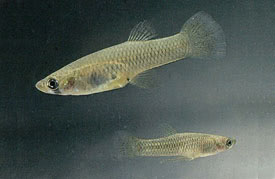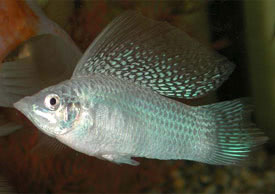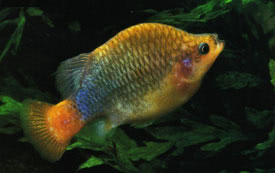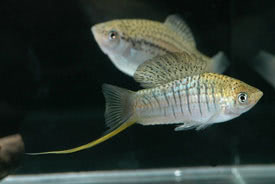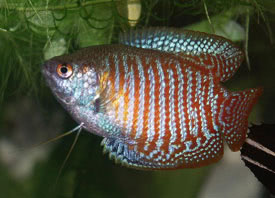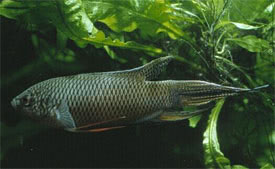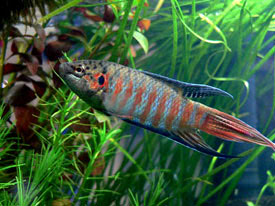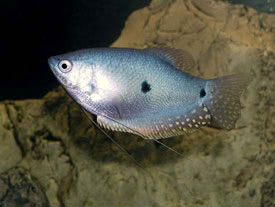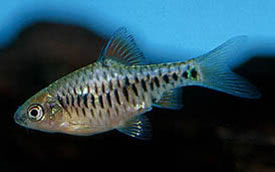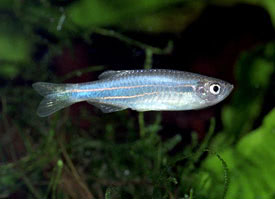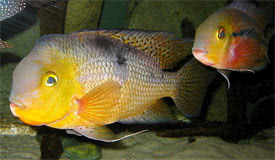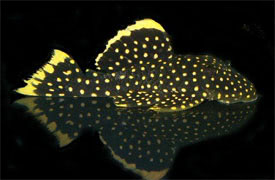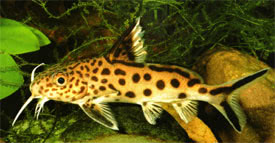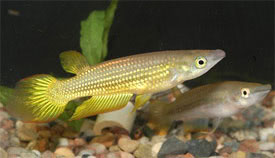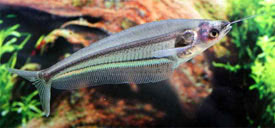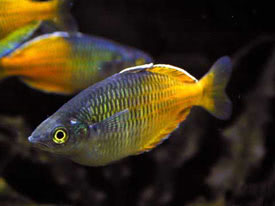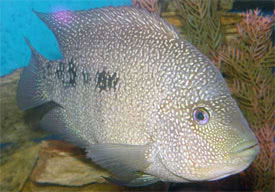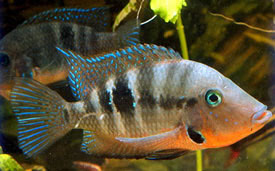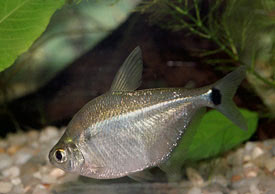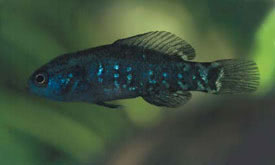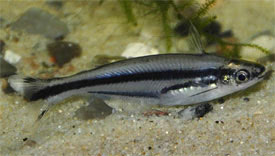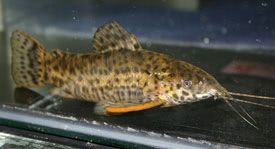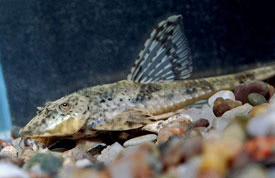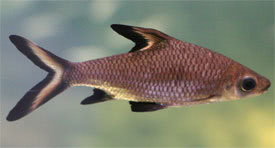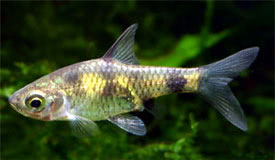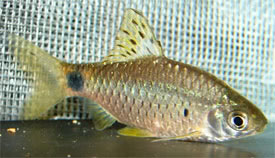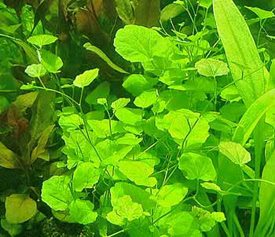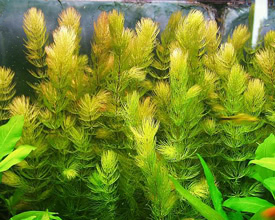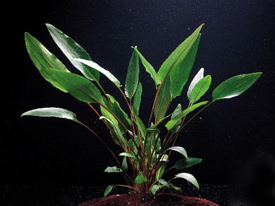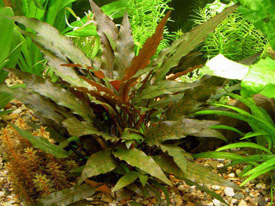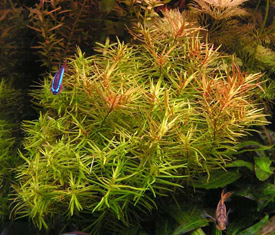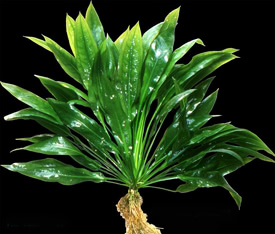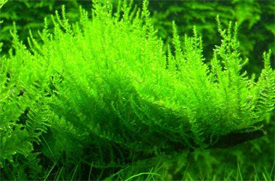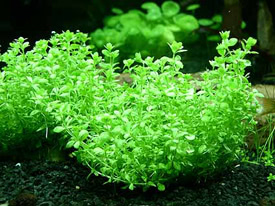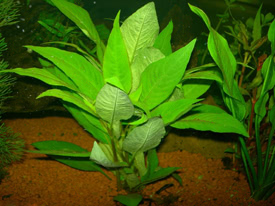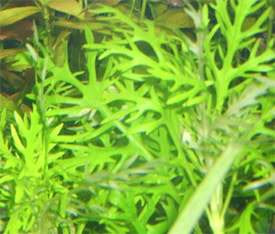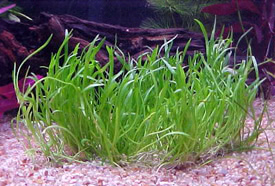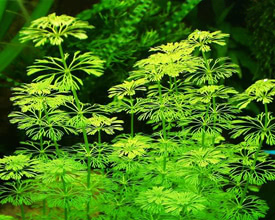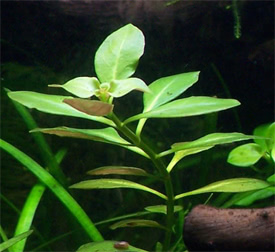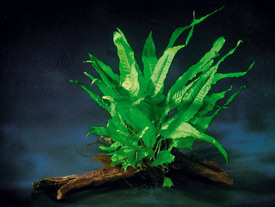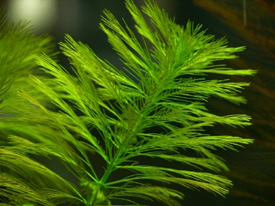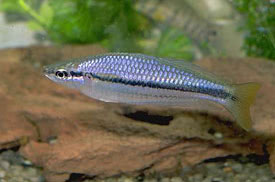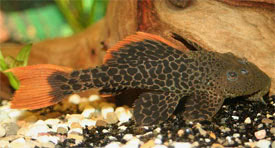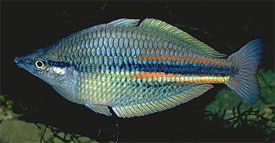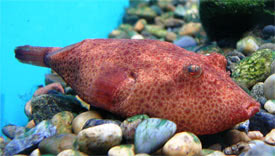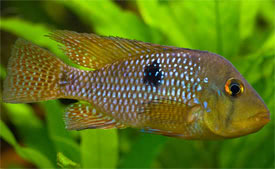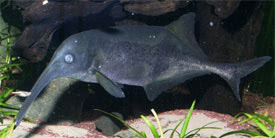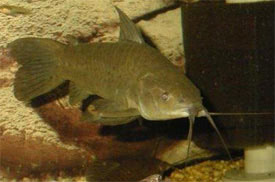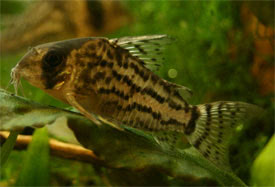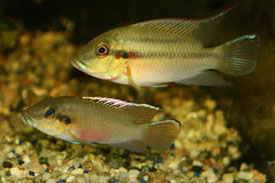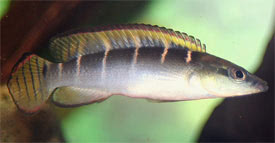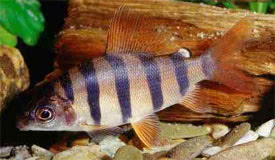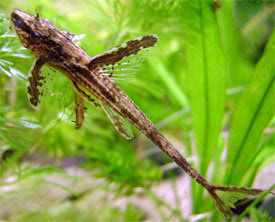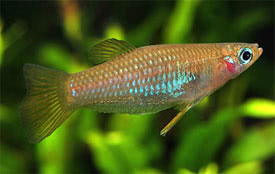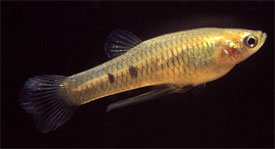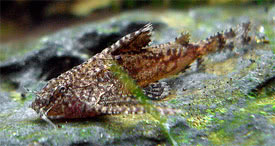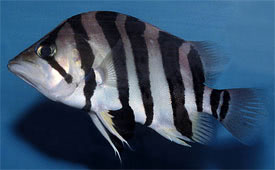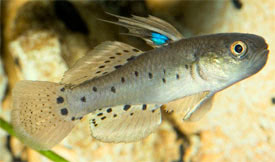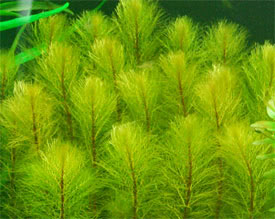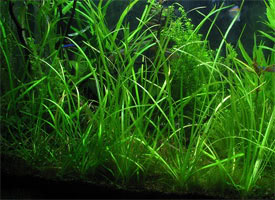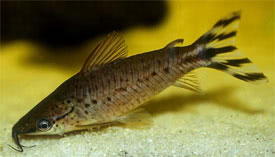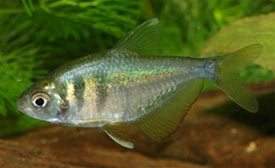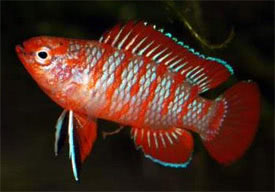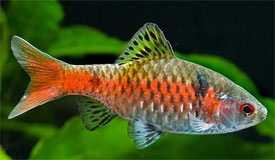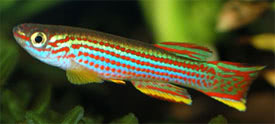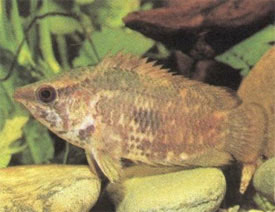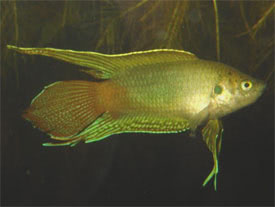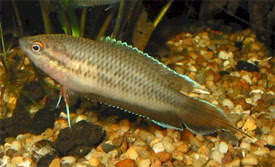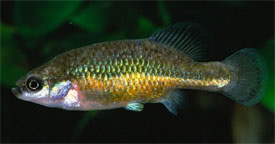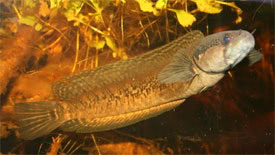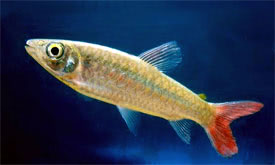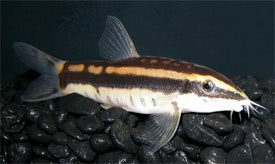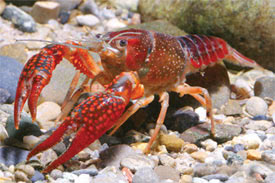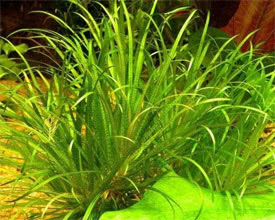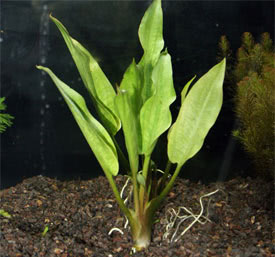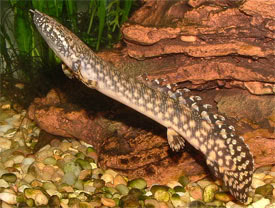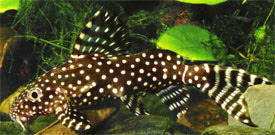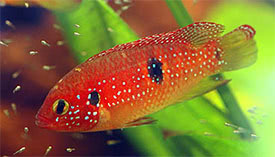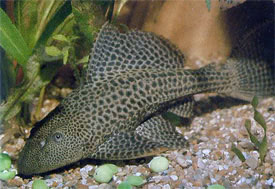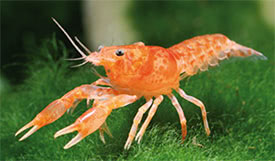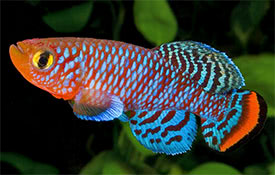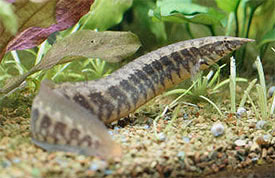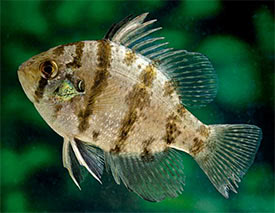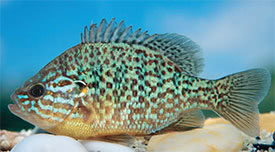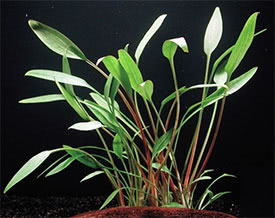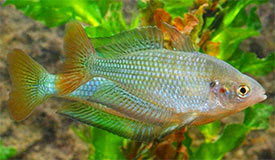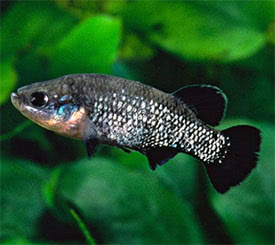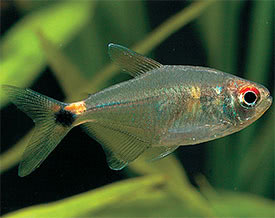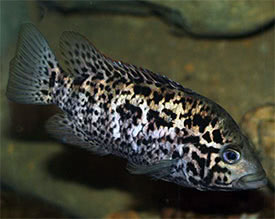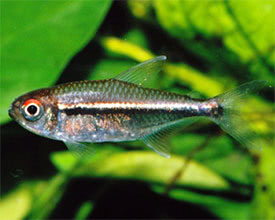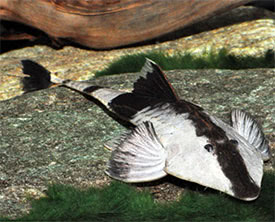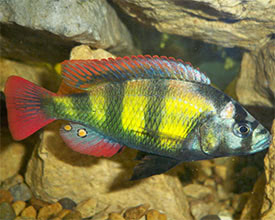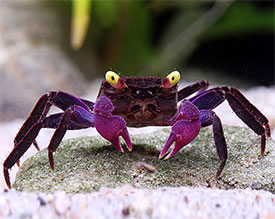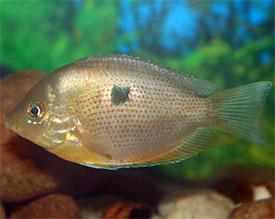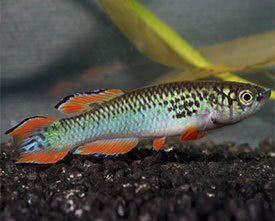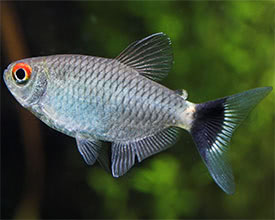
 Magyarul / Hungarian
Magyarul / Hungarian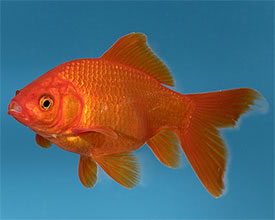
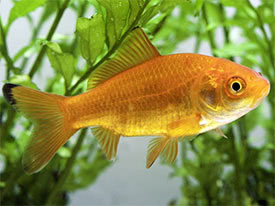
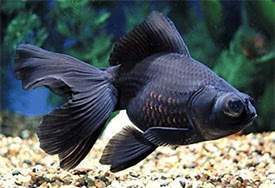
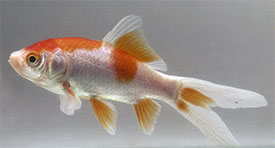
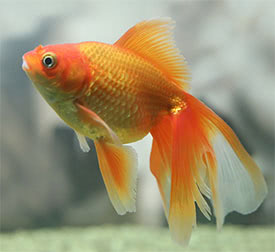
- Scientific name: Carassius auratus
- Synonyms: Cyprinus auratus (Linnaeus, 1758), Cyprinus mauritianus (Bennett, 1832), Cyprinus gibelioides (Cantor, 1842), Cyprinus langsdorfii (Valenciennes, 1842), Cyprinus thoracatus (Valenciennes, 1842), Carassius encobia (Bonaparte, 1845), Carassius grandoculis (Temminck & Schlegel, 1846), Carassius burgeri (Temminck & Schlegel, 1846), Leuciscus auratus (Mauduyt, 1849), Cyprinus chinensis (Gronow, 1854), Carassius pekinensis (Basilewsky, 1855), Carassius discolor (Basilewsky, 1855), Carassius coeruleus (Basilewsky, 1855), Cyprinus maillardi (Guichenot, 1863), Carassius auratus wui (Tchang, 1930), Carassius auratus cantonensis (Tchang, 1933), Carassius auratus argenteaphthalmus (Nguyen, 2001)
- Common name: Goldfish
- Group: Cyprinids
- Distribution: Asia; China
- Size: 10-20 cm, but it can reach 35 cm in outdoor ponds!
- Biotope: Inhabits rivers, lakes, ponds and ditches with stagnant or slow-flowing water.
- Social behavior: A quite peaceful and very social animals, do not keep them with aggressive or territorial fish. It is best to keep them alone in a coldwater species tank.
- Diet: Omnivorous; in nature it eats plant matter, crustaceans and insects. In the aquarium it will accept live, frozen and dried foods too.
- Breeding: Easy
- Tank: Minimum 500 litres
- Population: 3-4 fish for 500 litres
- Decoration: The tank substrate should be river sand, and plant many coldwater plants into it. The fish will usually eat or uproot live plants tho. Add smooth rocks or driftwood to provide some hiding places for the fish.
- Temperature: 5-30 °C
- pH: 6.0-8.0
- Hardness: 5.0-19.0 dGH
- Lifespan: 10-30 years
Common Goldfish has an elongated, flat body with a light orange coloration and metallic shine. The head is wide, but short, and the tail is forked. Goldfish has numerous color and form variations. They require a quite large aquarium with a cover, as they might jump out. They also require a strong filtration system and a lot of dissolved oxygen. Goldfish mustn't be kept in small bowl aquariums, as may have seen in movies, because they grow big, eat a lot, and also produce a lot of waste, so it can easily crush the balance in the aquarium. Goldfish benefit greatly from more frequent water changes, so change 20-30% of their water weekly. They are very hardy fish, they whitstand cold water, however rapid changes in temperature can kill them, especially if the tank is small.
The common goldfish is not a good choise for the aquarium, they should be kept in outdoor ponds, only keep smaller Goldfish variants in the aquarium. Goldfish should be kept in a species only tank, or with some other cold-water fish (such as Honshu Loach - Cobitis takenoi). Goldfish shouldn't be kept in a tropical community aquarium. They are also great scavengers, so it is really not necessary to add other bottom dwellers to the aquarium when you have goldfish.
Males are a little smaller, and have slender bodies, while females have a fatter appearance when viewed from above. Males also develop breeding tubercles, white spots on their gill covers, and head.
Goldfish will only spawn in the wild during spring. It is possible to spawn them in the aquarium. For breeding use a 100 litres aquarium, and place a batch of tangs (such as Elodea densa) into the tank, and place a pair, or a small group of Goldfish into the aquarium. To induce spawning, the temperature can be slowly dropped to around 11° C, and then slowly warmed up until they spawn. Spawning generally begins when the temperatures are between 20-23 °C. This way we can mimic the conditions found in nature during springtime, the only time Goldfish will spawn in the wild. Feeding lots of high protein foods during this time will also induce spawning. During courtship the male will chase the female around the aquarium in a non-aggressive way. During the spawn, the fish will gyrate from side to side, and the male will push the female against the plants. This stimulates the female to drop tiny eggs which the male will then fertilize. The number of the eggs are usually over 1000, and they stick to the plants with adhesive threads. The parents will eat the eggs, so it is best to remove them after spawning is complete. The eggs will hatch in 4 to 7 days, depending on the temperature. The fry can be easily fed with brine shrimp, cyclops, or dry foods. At first, the fry are a dark brown or black color in order to better hide, and they gain their adult color after several months.
https://www.fishbase.se/summary/Carassius-auratus.html
http://animal-world.com/encyclo/fresh/goldfish/Goldfish.htm
https://en.wikipedia.org/wiki/Goldfish





